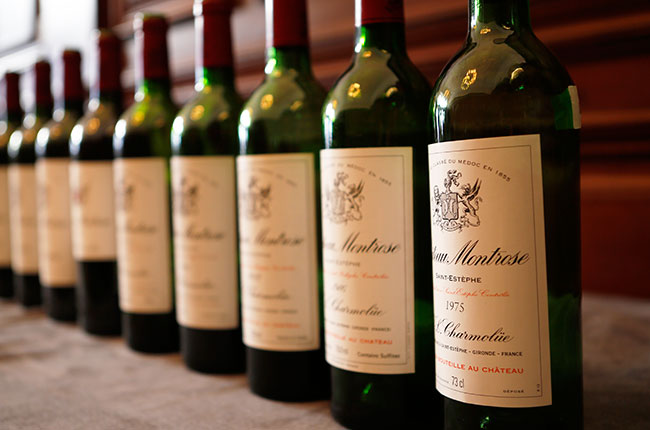Jane Anson reports on a tasting of Château Montrose, nicknamed the first growth of Bordeaux's St-Estèphe appellation, including the fabled 1982 vintage and going right back to 1975.
Held in London in March, this tasting covered more than 40 years and five decades.
It went from 1975, when Château Montrose was owned by the Charmolue family (who today have a biodynamic estate down in Saint-Rémy-de-Provence) through to 2006, the year the Bouygues became owners, and up to 2011, the year before managing director Hervé Berland joined Montrose from Château Mouton Rothschild.
Before Berland, Montrose was under the stewardship of another former First Growth director in the form of Jean-Bernard Delmas of Haut-Brion.
The three oldest wines in this tasting, 1975, 1982 and 1986, are perfect lessons in how great Bordeaux can age, while the youngest show the benefits of the vast investment programme undertaken in recent years.
Read the rest of this column below the wines
Château Montrose wines
Click on the wines to see the full tasting note and stockist information. Stockist search aided by Wine-Searcher.com. Wines were tasted at Decanter’s Bordeaux Fine Wine Encounter in March 2017, where Montrose held a masterclass for guests.
Château Montrose: How it all began
Théodore Dumoulin, the man who founded Château Montrose, lived just a few minutes away from my house in downtown Bordeaux at 4 rue du Palais Gallien. I walked over to it a few days ago to look at the still-handsome, if grubby, limestone building that sits between Place Gambetta, one of the city’s leafy central squares, and the remains of the Palais Gallien amphiteatre, built by the Romans to hold 15,000 spectators and that had been turned into a public quarry (still within the ruined ampitheatre walls) in Dumoulin’s childhood during the French Revolution.
He died in this house in 1861, 46 years after planting vines on a heather-covered hill on a far corner of the Calon Ségur estate that he had inherited from his father (also a Théodore Dumoulin) in 1812. The second Théodore sold most of Calon in 1824 – to a Bordeaux neighbour of his, the wine merchant Pierre Firmin Lestapis – but kept this corner for himself, naming it Montrose-Ségur (the most romantic explanation for this is because of the purple heather that made it a mont rose, or pink hill).
It’s kind of pleasing to think that he lived to see his new creation, planted on slopes overlooking the Gironde estuary – five kilometres wide at this point and the largest estuary in Europe – being named a Second Growth in the 1855 Paris exhibition, neatly overtaking his former property Calon Ségur that had to be content with a Third Growth ranking. He must have been happy with the wine at least, as he kept expanding his estate, bringing it up to 95 hectares by the time of his death, pretty much the exact size and footprint of vines as today (although they shrunk in size over the years before being replanted or in some cases reunited with the original estate).
Tasting through a vertical of any wine is instructive, but there is something particularly interesting in one that has such a grip on the imagination as this one. Montrose was one of the first estates in Bordeaux to introduce a second wine back in the 1860s – and a third wine at the same time for good measure (called, rather presciently St-Estèphe de Domaine de Montrose). This was under the ownership of industrialist Mathieu Dollfus – someone who would feel pretty comfortable with today’s Martin Bouygues I suspect – who introduced maternity benefits for his female workers and shared (some) profits with all of them.
It has long been seen as the First Growth of St-Estèphe, making wines with a classic interpretation of the appellation reflecting its deep gravel slopes and terraces that offer excellent drainage and a location that grazes the edge of the Garonne river – you can practically throw a fishing line to catch your supper from two of the 100-plus plots in particular, 84B and 84H – and so benefits from winds that keep the vines healthy. Jean Cordeau, an agricultural engineer who was head of the winegrowing department of Bordeaux Chamber of Agriculture before becoming a consultant said recently, ‘No vineyard could better look to the river than this one… I see less disease at Montrose than elsewhere, less viral disease, mildew, vinestock disease… It’s due to the ventilation’.


